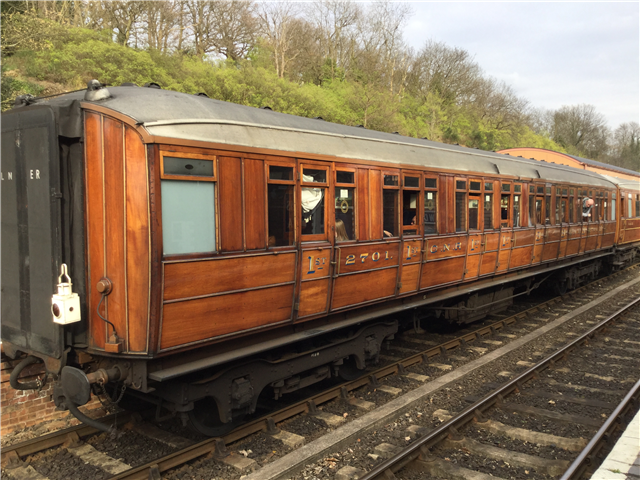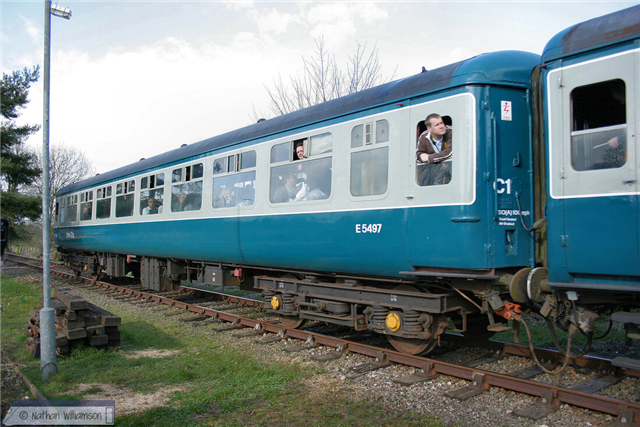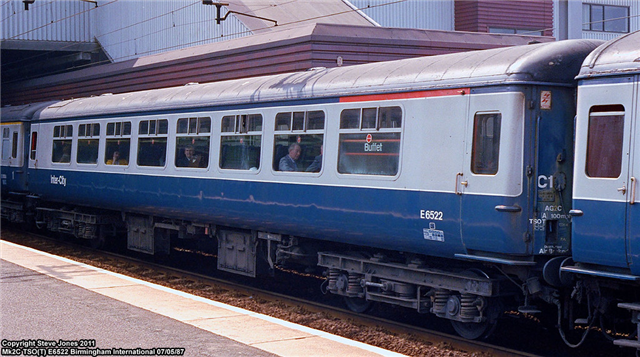The Mark 2 has a semi-integral construction, giving it more strength than a in the event of an accident. A key driver of the changed construction method was to overcome the serious corrosion problem point in the Mark 1 at the base of the body, where it was attached to the underframe. Other changes of design, such as the window units, were for the same reason, which had become a serious problem in Mark 1 vehicle maintenance costs. Revised painting methods were also part of this, which coincided with the change of livery from maroon (dark green on the Southern) to the blue and grey that Mark 2 coaches wore for much of their lives (some of the earliest Mark 2 coaches had the old livery at first).
The Mark 2 coach was one of the mainstays of the Inter-City network, but ne
No catering vehicles were built to Mark 2 design, so all Mark 2 Inter City trains offering catering facilities (including the later air conditioned stock) continued to include Mark 1 restaurant or buffet cars.
Since their withdrawal from most main line duties, Mark 2 coaches have played an increasing role on private rail tours, charter trains, . Since 1996, over 140 Mark 2 carriages have been exported to New Zealand, where they are still in mainline service (as of 2020).



